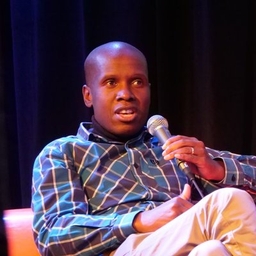
Andrew Mambondiyani
Reporter at Freelance
Journalist: MIT Knight Science Journalism Fellow '11. Interests: Climate Change|| Environment|| Human Rights|| Science
Articles
-
2 weeks ago |
theenergypioneer.com | Andrew Mambondiyani
Near an imposing mountain in this area, a mining company recently discovered rich lithium deposits, bringing both excitement and anxiety among local people. Globally, lithium has been touted as one of the potential . But in Zimbabwe, lithium mining’s carbon footprint is too large to ignore.
-
2 months ago |
ssir.org | Kyle Coward |Andrew Mambondiyani |Robyn Huang |Sarah Murray
New approaches to social change (more) Building for the Future By Chicago-based HIRE360 connects underrepresented workers and businesses toopportunities within the traditionally insular world of construction. Court AI By A new AI-powered technology is expediting India’s notoriously dilatory legalsystem.
-
Mar 4, 2025 |
ssir.org | Andrew Mambondiyani
Human Rights Mercy Corps leverages satellite data and AI to preemptively send emergency relief to people ahead of natural disasters. To read this article and start a full year of unlimited online access, subscribe now! Subscribe Now Already a subscriber? Login Need to register for your premium online access,which is included with your paid subscription? Register Now Support SSIR’s coverage of cross-sector solutions to global challenges.
-
Feb 24, 2025 |
foodtank.com | Andrew Mambondiyani
Zimbabwe is in the midst of a crippling El Niño-induced drought—the worst in more than 40 years. It has wiped out most of last year’s rain-fed crops, particularly the now staple crop, maize. With up to 70 percent of Zimbabwe’s population surviving on rural economic activities—mostly rain-fed crop farming—recurring droughts are devastating to the country. The drought has left more than 7 million people without enough food.
-
Jan 29, 2025 |
moretoherstory.com | Andrew Mambondiyani
This display is part of a years-long nationwide campaign by AHF Zimbabwe, a nonprofit organization working to end child marriage. Yet despite such efforts, the practice of child marriage has new cause for worry: the 2024 El Niño-induced drought, compounded by the knock-on effects of climate change, has ravaged Zimbabwe, leaving over 6 million people food insecure and the government scrambling to acquire up to $2 billion to feed its starving population.
Try JournoFinder For Free
Search and contact over 1M+ journalist profiles, browse 100M+ articles, and unlock powerful PR tools.
Start Your 7-Day Free Trial →Coverage map
X (formerly Twitter)
- Followers
- 3K
- Tweets
- 1K
- DMs Open
- Yes

RT @TheMirrorMsv: Matthew Takaona has just been arrested outside Mushayavanhu Primary School where he and a group of parents were cutting g…

RT @thestandardzim: #BREAKING 🔵Blessed Mhlanga has been granted $500 bail. https://t.co/3XAh8cY3zZ

RT @nelsonchamisa: This luminary, and illustrious citizen @bbmhlanga is just a journalist not a criminal. Professional journalism must not…

